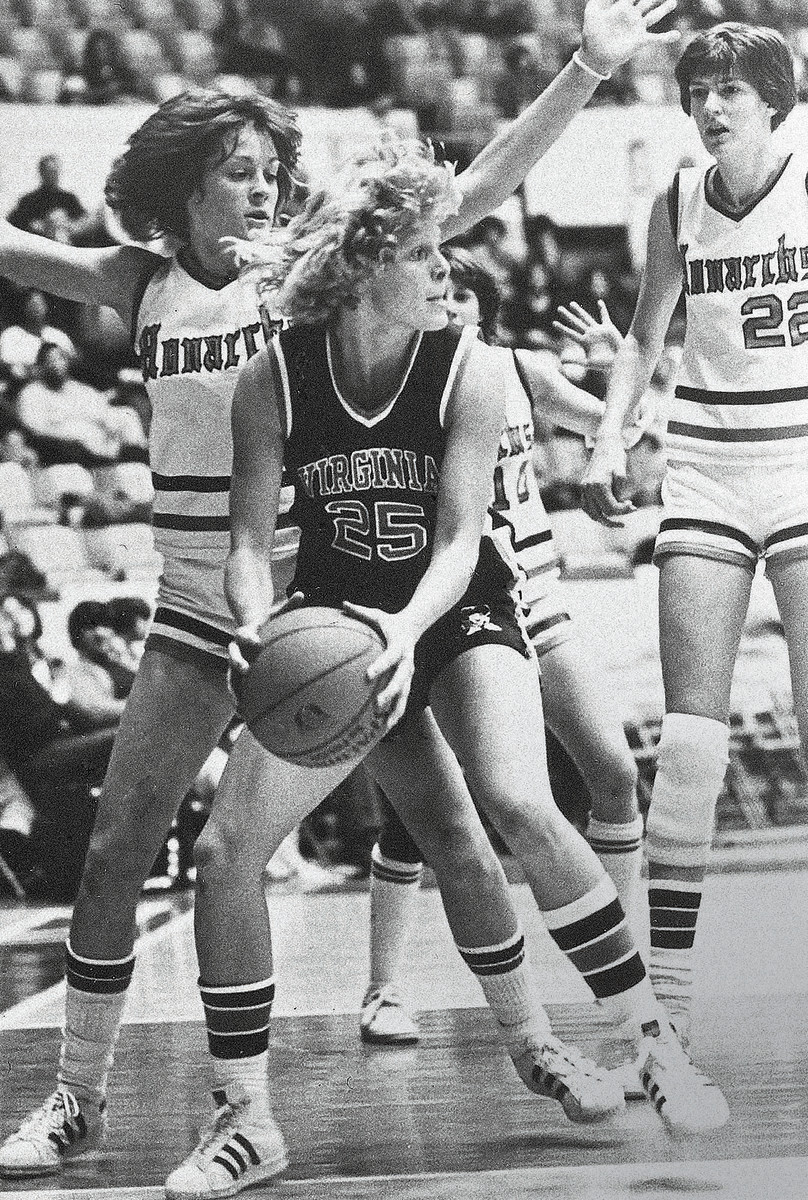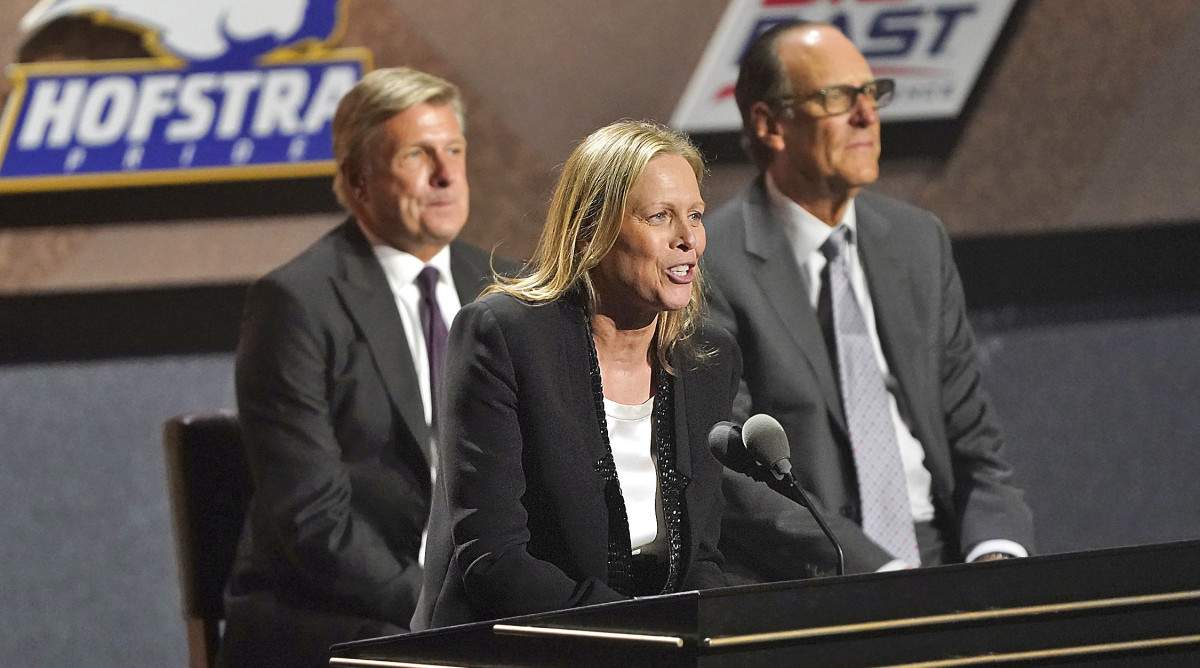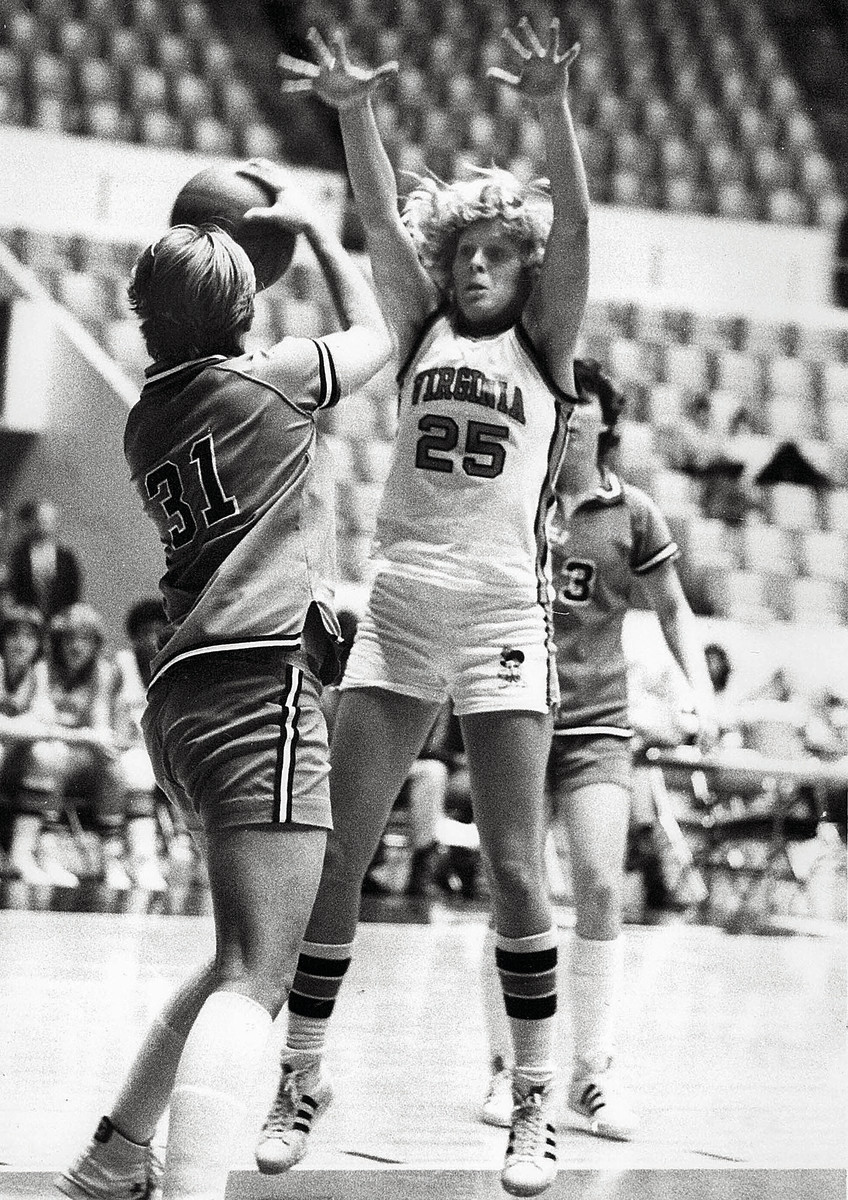How Title IX Influenced My Journey—And Changed the Landscape of Sports
I’ve saved just about everything. Since my journey in sports began almost exactly in parallel with the passage of Title IX 50 years ago, my souvenir collection has grown: newspaper clippings; cards; photos; game credentials; speeches I gave as the first president of the WNBA, the first woman to serve as president of USA Basketball and now commissioner of the Big East Conference; drawings that little girls in the stands handed me of their favorite WNBA stars—all that and more is stuffed in drawers, mounted in scrapbooks and piled up in boxes in my attic.
It’s a little painful to go through some of it because the bits and pieces bring back such intense memories. Not necessarily bad memories but just such powerful memories of what we did (and how I was part of it), what we created, how far we’ve come and how far we have left to go.

I was 12 when Title IX went into effect. Old enough to have already spent years shooting baskets and tossing footballs and baseballs in the yard with my dad and just young enough to have barely felt the brunt of the sexism that the law was designed to combat. My mom and dad offered strong, unqualified support at every turn. When it came to the pursuit of our dreams, they treated my younger brother and me the same.
I competed in swim meets at the community pool in my hometown, but my sports opportunities otherwise were limited. In my junior high school, the only team offered for a sports-minded girl like me was cheerleading, and I didn’t make the squad. I use it now as material in my speeches—“Haha, I’m just a frustrated cheerleader”—but it was humiliating at the time.
Then Title IX came to be. I started high school, where my dad was the athletic director. It took little prompting for him to support and create girls teams. I played field hockey and basketball and ran track, and the landscape started to change.
When I arrived at the University of Virginia in 1977, seven years after the school began accepting women, it was harder to ignore the inequities that Title IX had only barely begun to correct. I was one of two partial-scholarship players my first year, because in those days the women’s basketball team had only one full scholarship available for the entire team. We had little else: concrete locker-room floors, garish uniforms, no pregame meals, no air travel and only a handful of fans at our games.
But it was a stepping stone for me to play professional basketball in France after graduation, go on to law school and eventually work for the NBA as a staff attorney, my first job in sports. That’s what not enough people talk about with Title IX: My debt-free education at a prestigious university and the career that followed were made possible by this transformational law, just like the educations and careers of thousands of female athletes in the decades that followed. In my current role in college sports, I cherish the opportunity to continue that aspect of Title IX’s legacy.

There have been plenty of victories and abundant progress made since 1972, but also setbacks. The inequities at the NCAA women’s basketball tournament last year—widely publicized on social media—were among them.
In most places, the resources available to women’s sports teams still lag behind those the men enjoy. And three decades into my career, I still go to meetings in which I am the only woman in the room.
I’ve come to think about the expansion of women’s and girls sports in four different categories. All of them have been influenced by Title IX. With every one of these, you can point to progress. And with every one, you can also talk about the work that remains.
The first is participation. The massive growth in this area just can’t be denied: Many more girls and women play sports at every level today than they did 50 years ago. Though conditions aren’t always equal, true parity is actually possible to imagine.
The second is women as spectators. I remember being part of fan development conversations in my early years at the NBA and asking: Are women watching? Are they buying our tickets and products? Should we market to them specifically? Now, men’s and women’s sports alike take for granted that women are part of their consumer bases and can (and do) root forcefully with their wallets. Title IX is at least partly the reason why.
The third is the emergence of women’s professional leagues and highly competitive collegiate competition. Had there not been robust participation—enabled by Title IX—in the lower levels of women’s sports, there would not be a WNBA or an NWSL or the other pro leagues that seem certain to be formed in the future. Thanks to Title IX, women now also make up more than half of Team USA, with female Olympic participation picking up steam in many other nations as well.

The fourth is women in sports leadership. Women aren’t just playing; they’re key decision makers and are making their presence felt across the sports business spectrum, whether in leagues, college conferences, national governing bodies, networks and ownership groups or at the brands that are buying in. The example we’ve set in the U.S. is inspiring women athletes and leaders to press ahead globally as well, no easy feat in places where there is no legal counterpart to Title IX. Bold and forward-looking women, committed male allies and fast-moving social currents will remain the formula there.
I get frustrated with the naysayers who look at the challenges women’s sports face today and say, “Oh, it’s always been this way.” No, it hasn’t. There’s a world of good now—much more than before. If anything, the women’s sports community needs to do a better job of recording and honoring our history, our journey and our truths, both good and bad.
When I reflect on the story of women’s sports in our country, I sometimes think about my grandmother, Barbara Radecky Voscek, who immigrated to the U.S. in the early 1900s from what is now Slovakia. She raised seven children (including my mom, the youngest), first in western Pennsylvania, where my grandfather worked as a coal miner, and then in a row house in Trenton, N.J., after Grandpop found work in an auto factory instead. Grandmom didn’t speak English, so I never really got to know her, but I’m mesmerized—and inspired—to this day by her courage, her resourcefulness and the many sacrifices she made in search of a better life for herself and her family.
Women’s sports have an analogous narrative—they’ve been propelled by people courageous enough to take chances and break down walls, who’ve been relentless in their quest for equality and respect and who were willing to be the first so that others could later reap the gains. To those who fought for Title IX and for every milestone since: I can hardly put into words my gratitude for your vision and determination. To the next generation of women athletes and leaders: Carry on, ladies. You’ve been given a start, but there’s still plenty of groundbreaking, leading and fighting left to be done.
